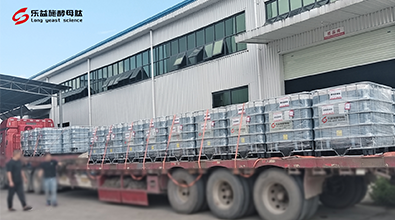The Science Behind Amino Acid Fertilizers
Leafy vegetables have rapid growth cycles and high nutrient demand. Traditional fertilizers supply essential elements, but they may not always be efficiently absorbed—especially under heat, drought, salinity, or weak root systems.While Amino acid fertilizers work on different levels to improve plant development and development:
Enhanced Photosynthesis
Certain free amino acids (such as glycine and glutamic acid) are precursors for chlorophyll. Higher chlorophyll levels lead to improved photosynthetic proficiency, coming about in darker, wealthier green colors and giving more vitality for development. This boost in photosynthesis is a key factor in expanding leaf area and in general biomass.
Optimized Nutrient Absorption
One of the most critical focal points of amino acid fertilizers is their capacity to shape organic-mineral complexes, or "chelates," with basic micronutrients such as iron, zinc, and calcium. This chelation handle makes these imperative minerals more promptly accessible for plant take-up, supporting by and large plant productivity and contributing to bigger, more advantageous plants.
Hormone Regulation
Amino acids serve as antecedents to imperative plant hormones that control development and improvement. These hormones impact different angles of plant development, including root and stem elongation and cell division. By giving the building pieces for these significant hormones, amino acid fertilizers offer assistance in coordinating adjusted and strong plant growth.
Stress Mitigation
Another critical advantage of amino acid fertilizers is their role in making a difference for plants that relieve different natural stresses, such as warm, dry weather and saltiness. By preparing plants with the devices to adapt to antagonistic conditions, these fertilizers empower verdant vegetables to maintain reliable development and improvement even when confronted with imperfect growing conditions.

Optimal Amino Acids for Leafy Vegetable Growth
While an adjusted blend of amino acids gives comprehensive benefits, certain amino acids have appeared especially promising comes about for verdant vegetable cultivation:
Glycine
As said previously, glycine is vital for advancing chlorophyll generation and, in general, plant development. Its capacity to improve photosynthetic proficiency makes it a fundamental component in amino acid fertilizers for verdant vegetables.
Methionine
Research has illustrated critical comes about with methionine in expanding plant development, chlorophyll synthesis, and dry weight in green plants such as broccoli and lettuce. This amino corrosive plays an imperative part in different metabolic processes within the plant.
Glutamine
Glutamine has appeared to have exceptional impacts on increasing new and dry weight in basil plants. It also contributes to the amassing of advantageous minerals, encouraging making strides the dietary esteem of verdant vegetables.
Proline
While not as specifically included in color and measure improvement, proline plays a pivotal part in push resilience. By counting proline in amino acid fertilizer definitions, producers can offer assistance to their verdant vegetables superior withstand natural challenges, by implication contributing to strides development and appearance.

Application Strategies for Maximum Efficacy
To harness the full potential of amino acid fertilizers for improving the color and size of leafy vegetables, it's essential to follow best practices in application:
Foliar Application
For leafy greens, foliar application is often the most efficient method. This approach allows the leaves to absorb nutrients directly, leading to faster results. When applying amino acid fertilizers via foliar spray, ensure even coverage on both the upper and lower leaf surfaces for optimal absorption.
Concentration and Timing
The ideal application rates can shift depending on the particular item and edit sort. By and large, considers have appeared positive comes about with concentrations extending from 2-4 ml per liter of water for commercial items. For particular amino acids, concentrations between 0.2-200 mg/L have been viable, depending on the amino corrosive and application method.
Timing is pivotal for maximizing the benefits of amino acid fertilizers. Apply amid dynamic development stages, such as 14 and 28 days after transplanting, to boost development when the plant needs it most. Early morning application is for the most part suggested to permit for ideal assimilation some time especially before the heat of the day.
Compatibility Considerations
When consolidating amino acid fertilizers into your supplement administration program, it's critical to consider compatibility with other items. Dodge blending with acidic items, as this can influence the viability of the fertilizer. Continuously perform a small-scale compatibility test some time recently large-scale application when combining with other fertilizers or trim security products.
Integrated Nutrient Management
While amino acid fertilizers offer significant benefits, they should be used as part of an integrated nutrient management strategy. Combine their use with traditional fertilizers and organic matter to create a comprehensive approach to plant nutrition. This integrated strategy can lead to synergistic effects, further enhancing the color, size, and overall health of your leafy vegetables.
By implementing these application strategies, growers can maximize the benefits of amino acid fertilizers, resulting in leafy vegetables with improved color, increased size, and enhanced overall quality. As consumer demand for visually appealing and nutritious produce continues to rise, the strategic use of amino acid fertilizers can give growers a competitive edge in the market.

Conclusion
For anyone producing leafy vegetables—whether in open fields, greenhouses, hydroponic systems, or vertical farms—amino acid fertilizer is a powerful tool for improving crop color, size, quality, and resilience.As part of a sustainable and efficient nutrition program, amino acid fertilizers help modern farms achieve better yields with fewer inputs, supporting both economic and environmental goals.
With the advancement of green agriculture, mastering innovative solutions such as amino acid fertilizers has become increasingly critical. For agrochemical producers, large fertilizer manufacturers, and wholesalers, integrating these advanced concepts into their product lines can deliver significant competitive advantages. The unique benefits claimed by amino acid fertilizers align perfectly with the market's growing demand for cost-effective agricultural inputs.
Facing multiple stresses like drought, salinization, and diseases, amino acid fertilizers offer large farms and agricultural groups a sustainable path to increased efficiency—significantly enhancing crop adaptability, improving leafy vegetable quality, and boosting market competitiveness while reducing overall input costs.
Are you ready to revolutionize your leafy vegetable production with cutting-edge amino acid fertilizer technology? LYS Biotech, with over 70 years of experience in yeast enzymatic technology, offers state-of-the-art solutions tailored to your specific needs. Our unique patented technology, high-quality raw materials, and rigorous quality management ensure that you receive products of unparalleled efficacy and reliability.
Whether you're an agrochemical manufacturer looking to enhance your product formulations, a large-scale distributor seeking differentiated, high-value fertilizers, or a farming group aiming to improve crop resilience and quality, LYS Biotech has the expertise and products to help you achieve your goals.

FAQs
Q1: How quickly can I see results after applying amino acid fertilizers to my leafy vegetables?
A: Results may vary depending on crop type and growing conditions. Field tests indicate visible improvement in leaf color within 7 to 14 days after application. After 2 to 3 consecutive applications, plants exhibit more pronounced growth and greener foliage.
Q2: Are amino acid fertilizers safe for organic farming?
A: Many amino acid fertilizers are derived from natural sources and can be suitable for organic farming. However, it's essential to check the specific product certification and comply with local organic farming regulations.
Q3: Can amino acid fertilizers replace traditional NPK fertilizers entirely?
A: While amino acid fertilizers offer significant benefits, they are generally most effective when used in conjunction with traditional fertilizers as part of an integrated nutrient management strategy. They complement rather than replace conventional NPK fertilizers.
Premium Amino Acid Fertilizer Solutions for Leafy Vegetables | LYS
Ready to transform your leafy vegetable production with advanced amino acid fertilizer technology? LYS ECO offers premium, scientifically-formulated solutions designed to enhance color, size, and overall crop quality. Our products leverage cutting-edge research and proprietary formulations to deliver superior results for growers, distributors, and agricultural investors alike.
Don't settle for ordinary results – choose LYS ECO for extraordinary growth. Contact us today at alice@aminoacidfertilizer.com to discover how our amino acid fertilizer solutions can revolutionize your leafy vegetable cultivation. Let's grow success together!
References
1. Zhang, L., et al. (2019). "Effects of Amino Acid Fertilizers on the Growth and Nutritional Quality of Leafy Vegetables." Journal of Plant Nutrition, 42(15), 1762-1773.
2. Colla, G., et al. (2015). "Protein Hydrolysates as Biostimulants in Horticulture." Scientia Horticulturae, 196, 28-38.
3. Liu, X. Q., & Lee, K. S. (2012). "Effect of Mixed Amino Acids on Crop Growth." Agricultural Sciences, 3(7), 943-948.
4. Ertani, A., et al. (2013). "Alfalfa Plant-Derived Biostimulant Stimulates Short-Term Growth of Salt-Stressed Zea mays L. Plants." Plant and Soil, 364(1), 145-158.
5. Popko, M., et al. (2018). "Foliar Application of Amino Acids Modulates the Antioxidant Defense System to Enhance Salt Tolerance in Lettuce." Journal of the Science of Food and Agriculture, 98(7), 2684-2691.
6. Calvo, P., et al. (2014). "Agricultural Uses of Plant Biostimulants." Plant and Soil, 383(1-2), 3-41.





